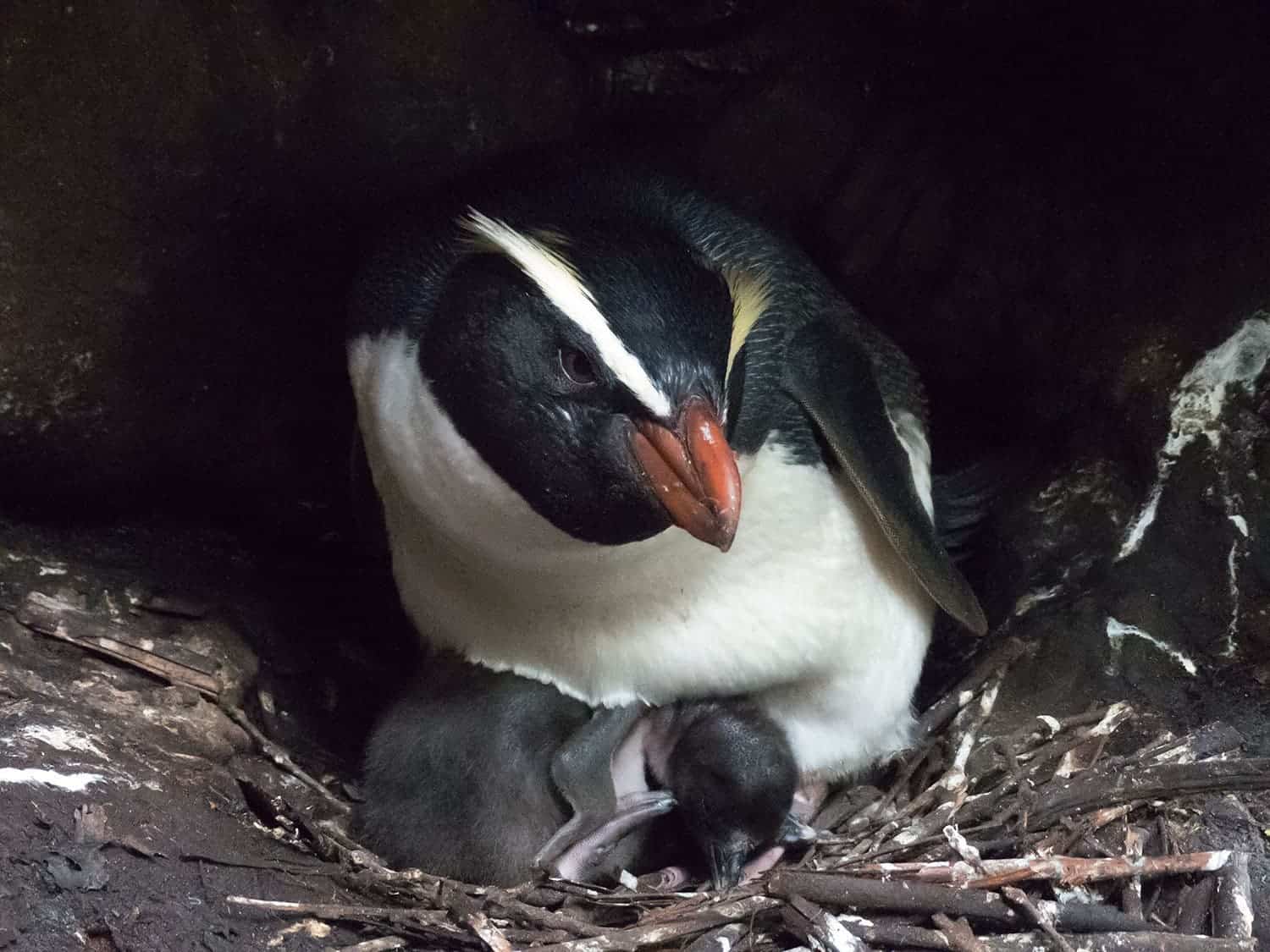A little penguin can swim very long distances. Fiordland penguins (Eudyptes pachyrhynchus), also known as Tawaki, breed in southern New Zealand, but they embark on a major journey that brings them to the Antarctic — and it only takes a few weeks. Researchers from the University of Otago satellite tagged the penguins to track their migration route for the first time.
Breeding and raising chicks is hard work and the penguins are exhausted and hungry when they’re done. Tawaki lose a whopping 50% of their weight during breeding, so they need to replenish it over feeding trips between December and February.
The researchers attached satellite tags to 19 penguins to track their migration. Although only five birds were tracked for the entire migration, the others provided partial tracking information. The inward and outward journey was completed within 8-10 weeks for a total of 3,500 to 6,800 km, which means they travel about 2,500 km away from their breeding grounds. For comparison’s sake, Emperor penguins travel up to 1,245 km away from their breeding sites. This distance swam by Tawaki entails a daily swimming speed between 20 km and 80 km. According to researchers, this distance could be the fastest possible for penguins.

The penguins migrated to one of two destinations depending on their ability to be good mama and poppa penguins. The unsuccessful breeders left New Zealand early and migrated to the subtropical front south of the island of Tasmania. Successful breeders likely left later because they devoted more time to parenting. They swam further south to reach the subarctic front, which was a good 750 km further than the other site. Therefore, they needed to swim faster than the other penguins — basically, the good breeders are super penguins.
Water depth, surface current velocity, and sea level all influence the penguins’ movements at the subarctic front while sea surface temperature and chlorophyll a concentrations influence the movements of penguins moving to the subtropical front that is located farther north.
What is interesting about this migration, besides the fact that it’s one of the longest penguin migrations, is that it’s not really necessary. The oceans around New Zealand contain a lot of penguin food at that time of the year.
“We believe that this extraordinary behavior could be a remnant from an ancestral penguin species that evolved further south in the sub-Antarctic region before populating the New Zealand mainland. This would also explain why the species breeding range is concentrated to the southern coastlines of New Zealand; if breeding further north, this migratory behavior would simply not be feasible,” explained lead researcher Thomas Mattern of the University of Otago.
Hats off to these penguin marathon swimmers that can give birth, raise their young, and still swim thousands of kilometers.
Journal reference: Mattern T, Pütz K, Garcia-Borboroglu P, Ellenberg U, Houston DM, Long R, et al. (2018) Marathon penguins – Reasons and consequences of long-range dispersal in Fiordland penguins / Tawaki during the pre-moult period. PLoS ONE 13(8): e0198688. https:/






